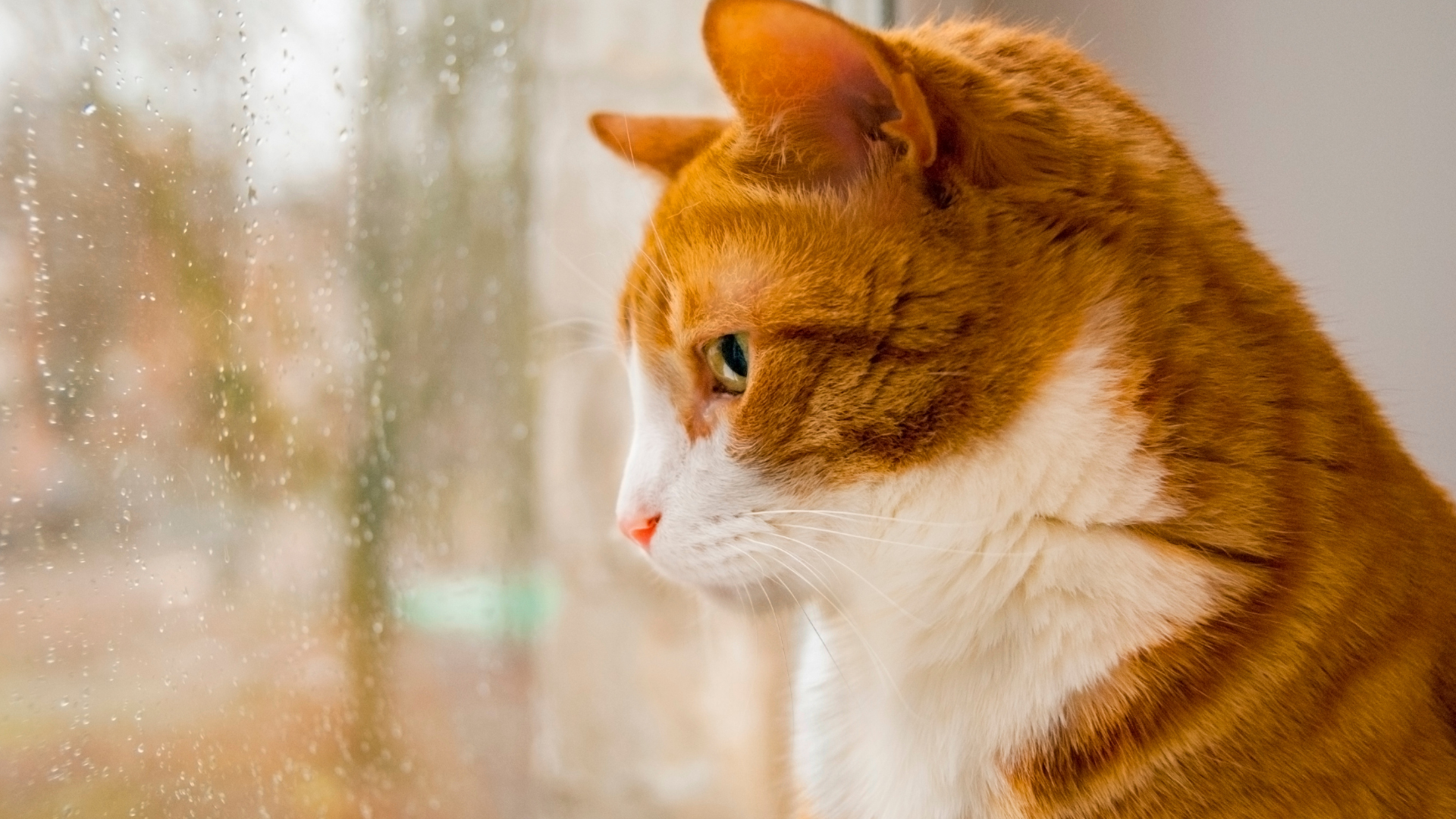Our dogs and cats are sensitive to environmental changes (such as air pressure and static) as well as having better hearing and sense of smell than humans. This means that they can often detect wind, rumbles, thunder, and lightning well before us, and these sounds and smells can be extremely stressful and frightening.
Signs that your pet may be experiencing storm fears or phobias can include:
- Hiding or trying to escape (cats in particular)
- Shaking or trembling
- Panting (when not in the context of just exercised)
- Salivating (when not in the context of eating)
- Large/wide eyes, ears back and down, tense body, curled tail between legs or tight to body
- Inappropriate soiling (for a fully toilet trained pet)
- Vocalizing
- Destructive behaviours
- Repetitive behaviours such as pacing or over-grooming
What to do before a storm
There are some actions we can take to ensure your pet is safe during a storm well before the storm hits. Being prepared helps minimise stress to you and your pet. If a storm is forecast during the day whilst you’re not home, make sure everything is set up before you leave.
- Check the weather forecast – Keep an eye on the weather forecast for the week, especially during your storm season. This should give you time to gather any supplies or prepare your home for your pet before the storm arrives.
- Microchip and registration – Ensure your pets are microchipped and registered with your council (phone and address most importantly) and details are up to date.
- Perimeter check – Ensure all fences and gates around your home and property are intact and secure. This also includes ensuring pools are fenced off to prevent any accidental drowning.
- Secure windows and doors – In particular, dogs can go to extreme lengths when fearful to avoid potential danger. Consider a fan or the air conditioning to be left on if there are warmer temperatures during the day.
- Water – Stress usually causes inappetence in pets, however it can make them extremely thirsty. Ensure fresh clean water is accessible indoors, ideally away from windows and doors as pets can avoid these areas when fearful.
- Safe place – Having your pet crate trained is beneficial in general, especially during storms so they have their own comfortable space to help them relax.
- Anti-anxiety aids – Some dogs respond well to compression vests and pheromone calming replicators.
- Consult your veterinarian – If you feel your pet is suffering from a storm phobia, we recommend speaking with your trusted veterinarian to discuss what options may be available for your pet.
What to do during a storm
Once the storm has begun, there isn’t too much you can do other than wait for it to be over. Therefore, the preparation before and recovery after a storm is important.
- Put on gentle music – This can help drown out or muffle some external sounds, however, chose wisely. It’s not the time to watch action-packed film on high volume.
- Give your pet space – If your pet has chosen to hide or prefers to be on their own, allow them. Affection and attention aren’t what every pet wants in these situations as they can be in heightened survival state of fight, flight, or freeze. If your pet seeks you out for comfort, gentle stroking may help them feel relaxed.
- Keep the room dark – Limiting visual stimulation can help in reducing stress for our pets. Close blinds or curtains and if your pet is crate trained, throw a sheet or thin blanket (mindful of air flow) to limit sound and visual stimulation such as lightning.
- Keep yourself calm – Studies have shown that dogs can ‘feed’ off the stress of their owners, when measuring cortisol concentrations (stress hormone) between species. Keeping yourself as calm and relaxed as possible during storms, may help your pet to also feel these affects.
What to do after a storm
The recovery time after a storm is individual to your pet. More confident and resilient pets may be able to bounce back within an hour or two, whereas others it may take days for hormone base levels to return. It is important to note, stress can have both psychological and physiological impacts on your pet short and long term. Therefore, ensuring plenty of recovery time is imperative for your pet’s overall wellbeing.
- Limit physical activity – Physical exercise can see a spike in more stress hormones such as adrenalin and cortisol which can add further stress to your already stressed pet. Instead, opt for a sniffing-based activity such as scent-and-seek, snuffle mat or nose work games within your home. If you are heading outside, er on the side of caution and allow plenty of time for your pup to calmly stroll with their nose to the ground, as sniffing helps lower blood pressure and anxiety.
- Keep the house quiet – Continue to keep the house quiet for a few hours after the storm has passed. If your pet is not given adequate time to de-stress, they can be at a greater risk to responding abnormally to a seemingly mild event. This is known as ‘trigger stacking’.
- Visit your veterinarian – If you pet displays a severe response to a storm, especially if it is a new response or behaviour, book in a visit with veterinarian to discuss this more.
References
- Veterinarian Specialists of the Rockies – https://vetsoftherockies.com/education/why-are-dogs-afraid-of-thunderstorms/
- Northwest Animal Hospital – https://nwveterinarian.com/storm-anxiety-pets/
- National Geographic – https://www.nationalgeographic.com/animals/article/animals-pets-summer-storms-weather
- Long-term stress levels are synchronized in dogs and their owners – https://www.nature.com/articles/s41598-019-43851-x
- PetMD – https://www.petmd.com/dog/behavior/importance-scent-walks-dogs
- Veterinary Centers of America (VCA) – https://vcahospitals.com/know-your-pet/why-dogs-sniff-butts
- Forever Hounds Trust – https://foreverhoundstrust.org/wp-content/uploads/2020/04/Trigger-stacking-and-coping-thresholds-fact-sheet-2020-1.pdf
- Beyond the Walk – https://beyondthewalkdogs.com/blog/f/trigger-stacking-in-dogs—may-be-more-to-it-than-you-think
- Bella & Duke – https://www.bellaandduke.com/learn/trigger-stacking-in-dogs/
Pet insurance can help by covering a portion of the eligible vet bill if the unexpected happens. Because it is difficult to predict the costs of veterinary care, it can help to have measures in place to help prepare for the unexpected. Check out our partner network and explore our policy tools to find a pet insurance policy.
Not all conditions or items are covered by Pet Insurance. Refer to the applicable Product Disclosure Statement for information about coverage and exclusions.








